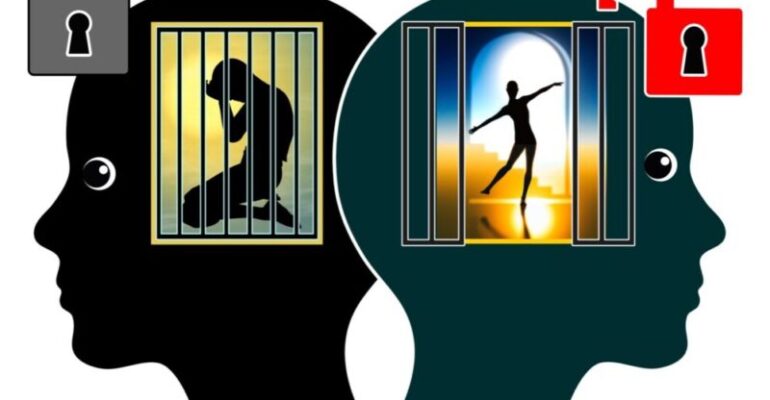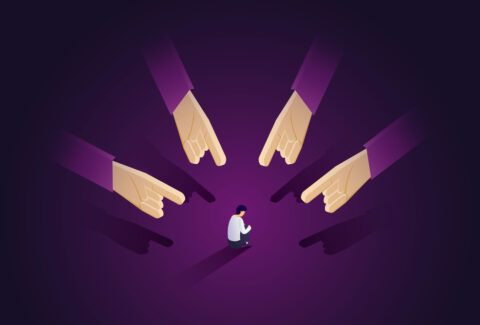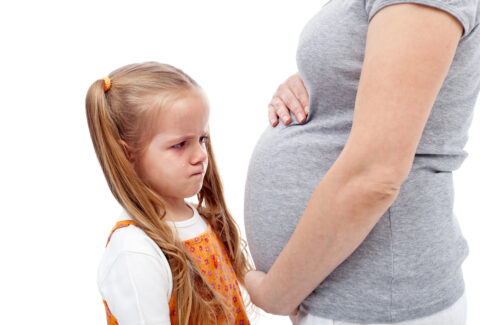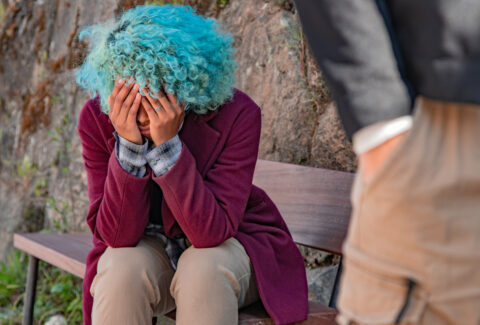Understanding Childhood Wounds and Their Lifelong Impact
Childhood is a period of profound development, where we form our earliest impressions of ourselves, others, and the world. This time shapes the emotional, cognitive, and social foundations upon which we build the rest of our lives. However, not all childhoods are filled with security, support, and positive reinforcement. For many, early experiences include various forms of “childhood wounds[1]”—emotional, physical, or psychological pain that leaves lasting effects. Understanding these wounds and their impact is crucial for healing and leading a fulfilled, healthy life.
What Are Childhood Wounds?
Childhood wounds[2] refer to deep emotional scars left by adverse experiences in early life. These experiences may range from overt trauma, such as abuse or neglect, to subtler forms of emotional wounding, such as feeling unloved, unheard, or overly criticized. Though they vary in intensity and nature, childhood wounds can undermine an individual’s sense of safety, worth, and identity. Some common causes include:
- Emotional Neglect: Lacking affection, encouragement, or emotional validation from caregivers.[3]
- Abuse: Physical, sexual, emotional, or verbal abuse, which can lead to trauma responses.
- Loss and Grief: Losing a loved one or facing significant disruptions in family structure.
- Bullying or Peer Rejection: Negative social experiences, particularly during formative years.[4]
- Family Dysfunction: Growing up with substance use, mental illness, or unstable caregivers.
While many parents do their best, even well-meaning actions can unintentionally cause harm if a child feels unworthy, unseen, or emotionally unsafe.
The Psychological Impact of Childhood Wounds
These early wounds shape our beliefs about ourselves, our relationships, and the world.[5] Because a child’s brain is still developing, early negative experiences can significantly impact their psychological and neurological growth, creating core beliefs and defense mechanisms that may last into adulthood.
- Self-Esteem Issues: When a child doesn’t receive love, validation, or support, they may grow up feeling inherently unworthy or “not enough.” This can lead to self-doubt, a fear of failure, and a constant need for approval.[6]
- Attachment Issues: Childhood wounds often disrupt healthy attachment. Those with insecure attachment may struggle with trust, fearing closeness, or, conversely, needing excessive reassurance in relationships.
- Emotional Regulation: A child who experiences trauma or neglect may struggle with managing emotions. This can lead to mood swings, anxiety, or emotional numbness as adults, with difficulty expressing or even recognizing their own feelings.[7]
- Defense Mechanisms and Coping Behaviors: As a means of self-protection, children often develop defense mechanisms that later become suboptimal. These can include perfectionism, people-pleasing, shutting down emotionally, or aggression. In the long term, these behaviors might cause relationship difficulties, stress, or even health issues.
The Physical Impact of Childhood Wounds
There is a strong body of evidence linking childhood adversity with physical health outcomes. The Adverse Childhood Experiences (ACE) study, for instance, demonstrated that children who experience significant adversity are more likely to suffer from chronic health conditions in adulthood, including heart disease, diabetes, autoimmune disorders, and even shortened lifespans.[8] The stress from unhealed wounds can lead to chronic stress responses, which increase inflammation and weaken the immune system, placing physical strain on the body.
Interpersonal Effects of Childhood Wounds
The patterns established in early life often carry into adulthood, influencing how we form relationships and interact with others. Common patterns include:
- Fear of Intimacy[9]: People with childhood wounds may avoid close relationships due to fears of betrayal or rejection. This can lead to loneliness and difficulty forming deep connections.
- People-Pleasing and Boundary Issues: Children who felt they needed to “earn” love may grow up constantly trying to please others, neglecting their own needs and struggling with boundaries.
- Repetition Compulsion[10]: Without awareness, adults may find themselves drawn to relationships that echo childhood patterns, subconsciously hoping to “correct” the past, yet often reenacting the same painful dynamics.
Pathways to Healing
Healing from childhood wounds is a deeply personal journey that involves self-awareness, empathy, and, often, professional support. While childhood experiences can have long-lasting effects, individuals have the power to transform their lives through conscious healing.
- Awareness and Self-Reflection: Understanding and acknowledging past wounds is the first step toward healing. This can be difficult, as it often involves revisiting painful memories, but recognizing the root causes of current challenges is essential.
- Inner Child Work: Many therapeutic approaches include engaging with the “inner child”—the part of oneself that holds childhood memories, emotions, and needs. By nurturing this aspect of themselves, individuals can begin to meet unfulfilled needs and create a sense of safety and love from within.
- Therapy: Modalities like cognitive-behavioral therapy (CBT), psychodynamic therapy, and trauma-focused therapies, including EMDR (Eye Movement Desensitization and Reprocessing), are often effective in working through childhood wounds.
- Mindfulness and Somatic Practices: Since childhood trauma can be stored in the body, practices like mindfulness[11], yoga, and breath awareness can help reconnect the mind and body, allowing individuals to process and release stored emotional pain.
- Building Secure Relationships: Healing often happens in the context of healthy relationships. Whether with friends, family, or a partner, secure relationships provide opportunities to practice trust, set boundaries, and receive support, gradually replacing old patterns with healthier ones.
Turning Pain into Purpose
While the scars of childhood wounds can be deep, many individuals find that healing allows them to harness their experiences in ways that bring purpose and compassion to their lives.[12] Understanding and healing one’s own wounds often fosters empathy, resilience, and the desire to help others on similar journeys. Many go on to become advocates, therapists, or supportive figures within their communities, using their experiences to support, uplift, and inspire others.
Conclusion
Childhood wounds can have a profound and enduring impact on an individual’s life, affecting mental health, relationships, and physical well-being. But with self-compassion, support, and the courage to face one’s past, healing is possible. Recognizing these wounds is the first step toward breaking free from old patterns and living a life guided not by pain but by choice, resilience, and self-love. Whether one’s journey is a solo path of self-discovery or includes the support of family, friends, or therapists, the process of healing offers the possibility of transformation—a life where old wounds are acknowledged, tended to, and ultimately integrated into a new narrative of strength and purpose.
[1] Nader, Kathleen O. “Childhood trauma: The deeper wound.” The Posttraumatic Self. Routledge, 2007. 117-156.
[2] Danese, Andrea, and Jessie R. Baldwin. “Hidden wounds? Inflammatory links between childhood trauma and psychopathology.” Annual review of psychology 68.1 (2017): 517-544.
[3] Clarke, Stephanie. Emotional abuse and emotional neglect in childhood: Subtypes, ecological correlates, and developmental tasks of emerging adulthood. Diss. University of Minnesota, 2015.
[4] Dill, Edward J., et al. “Negative affect in victimized children: The roles of social withdrawal, peer rejection, and attitudes toward bullying.” Journal of abnormal child psychology 32 (2004): 159-173.
[5] Danese, Andrea, and Anne-Laura van Harmelen. “The hidden wounds of childhood trauma.” European Journal of Psychotraumatology 8.sup7 (2017): 1375840.
[6] Sachs-Ericsson, Natalie, et al. “The long-term impact of childhood abuse on internalizing disorders among older adults: The moderating role of self-esteem.” Aging & Mental Health 14.4 (2010): 489-501.
[7] Campbell, Katharine Ann. “The neurobiology of childhood trauma, from early physical pain onwards: as relevant as ever in today’s fractured world.” European journal of psychotraumatology 13.2 (2022): 2131969.
[8] Schiraldi, Glenn R. The adverse childhood experiences recovery workbook: heal the hidden wounds from childhood affecting your adult mental and physical health. New Harbinger Publications, 2021.
[9] Repic, Tanja. “Fear of intimacy among married and divorced persons in association with physical abuse in childhood.” Journal of Divorce & Remarriage 46.3-4 (2007): 49-62.
[10] Benveniste, Daniel. “The Repetition Compulsion All Over Again.” (2016).
[11] Roche, Anne I., et al. “Childhood trauma and problem behavior: Examining the mediating roles of experiential avoidance and mindfulness processes.” Journal of American college health 67.1 (2019): 17-26.
[12] St John, Don. Healing the Wounds of Childhood and Culture: An Adventure of a Lifetime. Archway Publishing, 2022.







